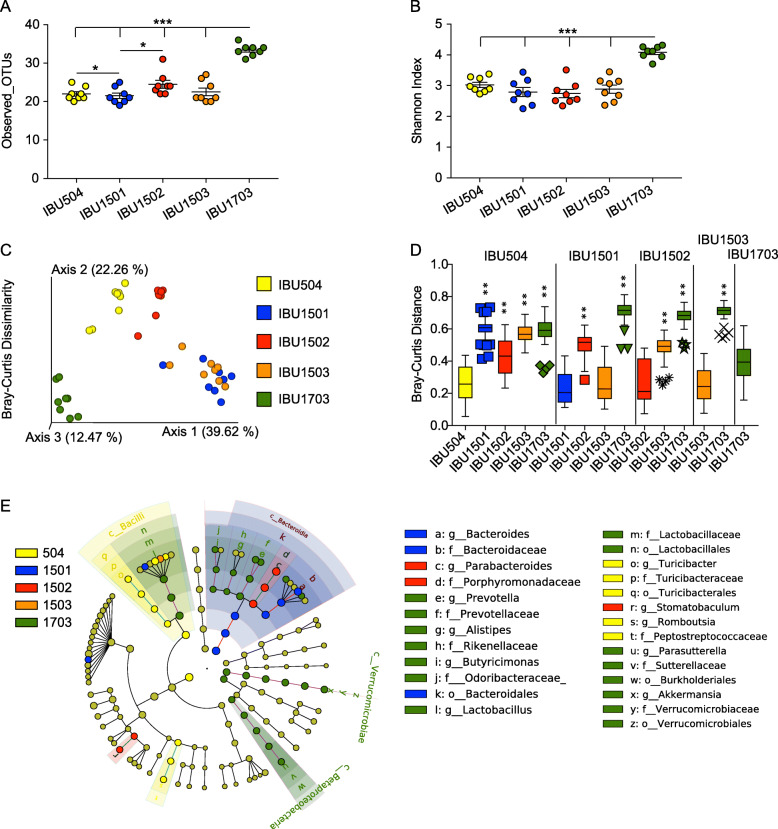Fig. 2.
Discrete parasitemia profiles correlate with a shift in Taconic C57BL/6N gut bacteria populations within a defined production suite. Fecal pellets were collected from mice (n = 8 mice; 4 mice each from two separate shipments) obtained from the indicated Taconic IBUs and subjected to 16S rRNA gene sequencing. Data were analyzed at species level with a 23,000 sequencing depth per sample. a, b Alpha diversity analysis using Observed_OTUs (a) and Shannon index (b). Data (mean ± S.E.) were analyzed by the Kruskal-Wallis test. c, d The PCoA plot shows beta diversity using Bray-Curtis dissimilarity distance (c), and the box and whisker plot shows their statistical significance by pairwise PERMANOVA with 999 permutations between IBUs on the top of vertical columns to IBUs on the X-axis (d). The box end depicts the lower and upper quartiles and the horizontal line inside the box is the median while points outside the whisker are outliers. The Y-axis shows the Bray-Curtis dissimilarity distance of IBUs on the X-axis to IBUs on the top of vertical columns. e Cladogram shows differentially abundant bacterial taxa among different IBUs with respective node color identified using LEfSe analysis. The cutoff for the LEfSe method was p < 0.05 (Kruskal-Wallis test) with LDA score > 4. *p < 0.05, **p < 0.01, ***p < 0.001

